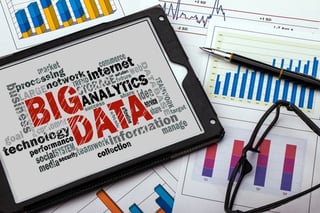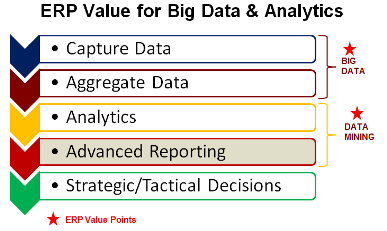In a recent blog we discussed how travel companies can derive benefits from Big Data, analytics and advanced reports in four operational areas:
Marketing Analytics – data will drive marketing programs with higher effectiveness for lead-to-customer conversion and higher average sales. 
Sales, Pricing & Inventory Management – accurate, real-time data drives price strategy precision; supports more accurate sales forecasting/modeling and optimized inventory control.
Customer Knowledge – marketing plans and sales operations benefit enormously from a deeper understanding of customer types, behaviors and histories.
Online Analytics – accurate, real-time data, available online and formatted for dynamic reporting formats, enable effective use of multi-channel marketing campaigns and effective dashboards.
While this may sound like all good things, it probably also sounds more than a little intimidating and definitely expensive. How can a travel owner or manager know if this technology suits his company and - if it does - how is he supposed to make this transformation happen?
The Travel ERP Value Proposition
When Enterprise Resource Planning systems first appeared in the 1990’s they delivered supply chain functionality but also gained a reputation as large, complex systems which were challenging for customers to install, customize - and afford.
In the last ten years they have become increasingly specialized by industry (travel being one example) and much more nimble to deploy and implement. Vendors have also streamlined functionality and pricing to make them more affordable for smaller companies. Despite those changes, these systems have yet to completely lose the reputation for being complicated software that is difficult to customize for customer operations.
To understand why Travel ERP – software specifically designed for travel management companies, tour operators and travel agencies (business, leisure, online & single site agencies) – is a change agent rather than an added layer of complexity, it’s necessary to keep in mind exactly what enterprise resource planning is all about.
At the highest conceptual level, this technology is nothing more than a means of linking company operations and information together. Think of it as everyone in one room talking to each other in the same language, rather than being in separate rooms tapping on walls to communicate.
In order to link company operations together, the software uses a common data model and standardized processes across such common place business activities as: accounting, payroll; HR; supply chain, CRM & procurement. A common data model means all these areas are now speaking the same language. Standardized processes is the equivalent of common sentence structures and dialects.
The power of this technology lies in the fact business operations are essentially transactional service exchanges between many different parties - all of which contribute to the company’s value proposition. Examples of these parties would include: suppliers; services; public agencies; employees; partners and customers. Since Travel ERP software provides a standardized data and process framework for these service transactions, the company enjoys benefits derived from an efficient and scalable exchange of information between internal departments and external 3rd parties.
In contrast, many travel companies without ERP systems find their growth brings with it a multiplication of disparate processes, increasingly inadequate procedures and isolated silos of data. In time, manual work-arounds become part of the working culture: payroll depends on commission information from sales; purchasing keys in updated cost information from travel partners and managers wait on manually keyed spreadsheets for operational reports.
ERP is a Big Data/Analytics Change Agent
Big Data is very self-descriptive. It refers to the exponentially larger amounts of data now available to companies. Until the explosion of digital online data, company information was – as the term implies – company information, limited to what could be captured from internal and external transactions. Now, online transactions have created volumes of information (think OTA) which has been made available and monetized by various industry enterprises. By accessing this 3rd party data, mixing it with internal information, and applying analytics, travel companies gain unprecedented knowledge of customers, markets and trends.
At first glance, the biggest challenge to companies embracing this new world of information would seem to be acquiring data and leveraging it with analytical skills. In fact, there is a rapidly growing industry of companies offering such services – customized by many factors, including industry. Companies can find many service offerings focused on the travel industry.
The daunting Big Data/Analytics challenge is in data aggregation and mining. Unless a company can effectively combine external and internal data it will have limited information to “mine”; without robust "mined” data, there will be a weak foundation upon which to apply analytics; without strong analytics, there will be inadequate reporting.
The earlier contrast between companies with and without ERP makes a compelling business case for the technology as a change agent for Big Data/Analytics. Simply put, if a travel company cannot effectively manage and leverage internal data, how will it be able to integrate external Big Data and use it in any meaningful way? The answer, of course, is that it wouldn’t be possible.
Those companies with ERP systems, on the other hand, enjoy a framework of standardized, integrated, data which feeds into the technology’s capability for information analysis and reporting. Third party Big Data/Analytics service providers will be able to leverage that framework and keep their focus on customizing products to meet customer needs.
Prior to the current age of Big Data/Analytics, ERP benefits were constrained to the scope of an enterprise and its third parties. Today this travel technology has become a gateway to a data and analytics revolution that is sweeping every industry. Now there is every reason to carefully conduct due diligence on how this software will be able to change and grow your business.
















